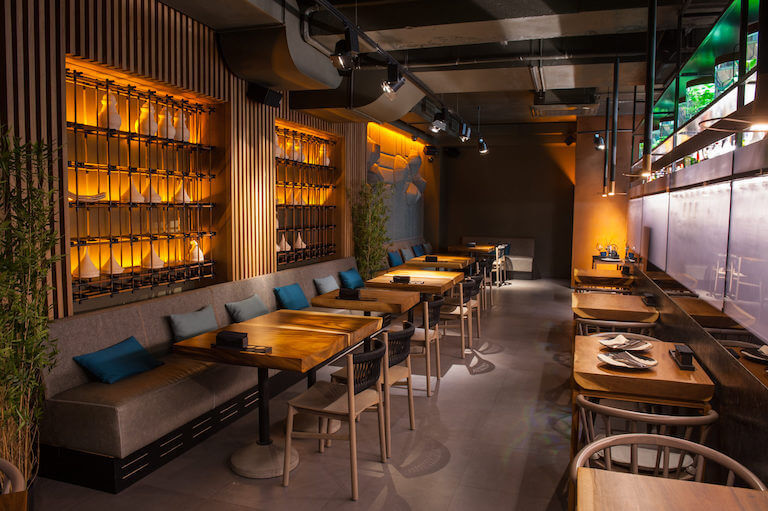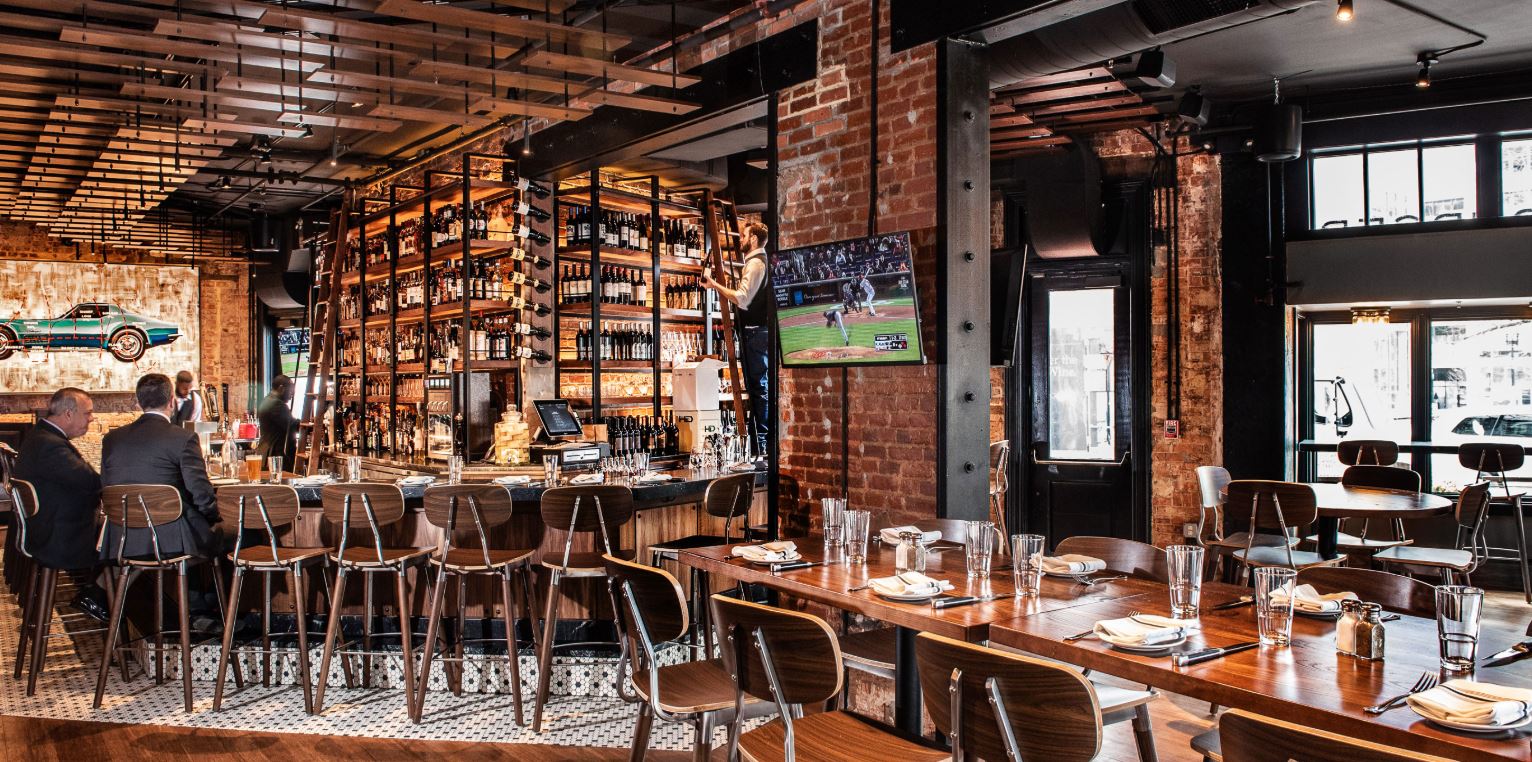Savor Genuine Oriental Cuisine With a Pan-Asian Spin for a Cooking Journey
Beginning on a culinary trip via authentic Eastern cuisine, improved with a Pan-Asian spin, supplies an unique possibility to check out the rich tapestry of flavors that specify the area's varied cooking customs. As you contemplate these attracting recipes, take into consideration the social stories and historic influences that shape them, each bite offering a tale waiting to be found. Romantic restaurants Islamabad.

Discovering Pan-Asian Tastes
In the world of worldwide gastronomy, Pan-Asian food sticks out for its impressive diversity and the unified interplay of tastes from various Asian societies. This culinary strategy celebrates the abundant practices and special ingredients located throughout the continent, creating a tapestry of tastes that is both satisfying and interesting. Trick to Pan-Asian food is its capability to stabilize different flavors-- sweet, salty, spicy, and sour-- while highlighting the freshness and quality of each active ingredient.
From the umami-rich soy sauce of Japan to the fiery chili peppers of Thailand, Pan-Asian food supplies a comprehensive combination of tastes. These components are commonly incorporated in creative methods, boosting dishes with layers of complexity. For instance, making use of aromatic herbs such as lemongrass and cilantro, usual in Vietnamese and Thai food, adds a refreshing illumination to recipes, while the unification of coconut milk provides a velvety, rich appearance.
The emphasis on fresh fruit and vegetables and aromatic spices guarantees that each dish is not just a banquet for the palate however likewise for the detects. Pan-Asian cuisine welcomes diners to start a culinary journey, exploring the large and differed landscapes of Eastern gastronomy with every bite.
Combination Meals to Try
While Pan-Asian food is celebrated for its typical flavors, the contemporary culinary landscape is progressively embracing fusion meals that mix these classic components with influences from various other regions. This innovative strategy not only honors the abundant heritage of Eastern cookeries however additionally presents novel taste experiences that interest modern palates.
A prime instance of such a fusion recipe is the Korean-Mexican taco, where marinated bulgogi beef is wrapped in a cozy tortilla, covered with kimchi and a spicy gochujang-infused salsa. This mix weds the bold, full-flavored tastes of Korea with the dynamic, fresh elements of Mexican cuisine. Likewise, sushi burritos have actually acquired popularity, amalgamating the delicate artistry of Japanese sushi with the hearty, hand-held convenience of a burrito, often including blend ingredients like tempura shrimp and avocado with a drizzle of wasabi mayo.
Another noteworthy recipe is Thai curry ramen, which infuses the creamy, aromatic spices of Thai curry right into the soothing brew of typical Japanese ramen, producing an unified blend that entices the detects. These fusion meals prolong beyond plain novelty; they represent a culinary discussion between societies, encouraging expedition and technology on the planet of Pan-Asian cuisine.
Essential Ingredients and Flavors
To truly appreciate Pan-Asian food, one should recognize the important active ingredients and seasonings that develop its foundation. This diverse cooking style attracts from a rich tapestry of Oriental practices, employing an unified mix of flavors and textures. Key components consist of soy sauce, fish sauce, and oyster sauce, which pass on a mouthwatering umami depth necessary to Asian meals. Corresponding to these are rice vinegar and mirin, providing a fragile level of acidity and sweetness.
Fragrant elements are crucial, with garlic, ginger, and lemongrass being common across numerous Pan-Asian dishes. These active ingredients supply an aromatic base that boosts the complexity of tastes. Spices such as star anise, cardamom, and cinnamon present heat and personality, resembling influences from regions like China and India.

Food Preparation Techniques and Tips
Grasping the art of Pan-Asian food requires experience with its unique food preparation techniques, each adding to the vivid tapestry of tastes this cooking practice is celebrated for. Central to these techniques is the stir-fry, a fast food preparation technique that protects the dietary stability and dazzling colors of ingredients. Utilizing a wok, the stir-fry technique permits even warmth distribution, important for attaining the particular structure and flavor equilibrium of Pan-Asian dishes.
Another essential method is steaming, specifically widespread in Chinese food. This mild approach preserves the all-natural flavors and nutrients of active ingredients, making it perfect for seafood and veggies. Dumplings, a cherished staple, usually take advantage of steaming, resulting in soft, delicious appearances.
Grilling, additionally indispensable, imparts smoky midsts to meals such as Oriental bulgogi or Japanese yakitori (pan asian dining Islamabad). This strategy often entails marinating active ingredients, permitting tastes to penetrate deeply before food preparation over an open fire or hot plate
Last but not least, mastering the art of stabilizing tastes-- wonderful, sour, salted, bitter, and umami-- is vital. Appropriately layering these components can elevate a dish from common to phenomenal, offering a complex and pleasing cooking experience that symbolizes the significance of Pan-Asian cuisine.
Dining Experiences Worldwide
Across the world, Pan-Asian cuisine provides an unequaled dining experience, celebrated for its rich tapestry of tastes and dynamic presentations. This culinary sensation has transcended cultural limits, recording the hearts and tastes of food lovers worldwide. In cosmopolitan cities fresh York, London, and Sydney, Pan-Asian dining establishments act as melting pots where cooking he said customs from Thailand, Japan, China, and beyond merge, giving restaurants with a diverse mix of dishes that highlight the region's variety.
The worldwide appeal of Pan-Asian cuisine depends on its capacity to use both authenticity and development. Chefs masterfully marry typical components such as lemongrass, soy sauce, and miso with modern techniques, resulting in meals that are both refreshingly new and acquainted. This blend enables restaurants to begin on a cooking trip that values investigate this site heritage while welcoming modernity.
Additionally, eating experiences are elevated via attentively developed settings that mirror the values of Pan-Asian aesthetics. From minimal Japanese-inspired interiors to dynamic Thai-themed rooms, each restaurant offers a distinct atmosphere that enhances the cooking offerings. Consequently, clients are not merely eating a meal yet partaking in a social experience, making Pan-Asian dining a truly international phenomenon.
Final Thought
The expedition of Pan-Asian food supplies an extensive understanding of the elaborate interplay of flavors and culinary customs across Asia. By embracing fusion meals such as Thai curry ramen and sushi burritos, the cooking journey not just highlights the flexibility of typical components yet also showcases cutting-edge modern techniques. This gastronomic journey, enhanced by essential spices and cooking methods, offers an one-of-a-kind chance to appreciate the social variety and culinary artistry that specify Pan-Asian cuisine on a global scale.
Getting started on a cooking trip via authentic Oriental cuisine, boosted with a Pan-Asian twist, offers a special opportunity to discover the rich tapestry of flavors that specify the region's varied cooking practices.In the realm of worldwide gastronomy, Pan-Asian cuisine stands out for its amazing variety and the harmonious interplay of flavors from different Asian societies. Trick to Pan-Asian food is its capacity to stabilize contrasting flavors-- sweet, salty, spicy, and sour-- while highlighting the freshness and quality of each active ingredient.
